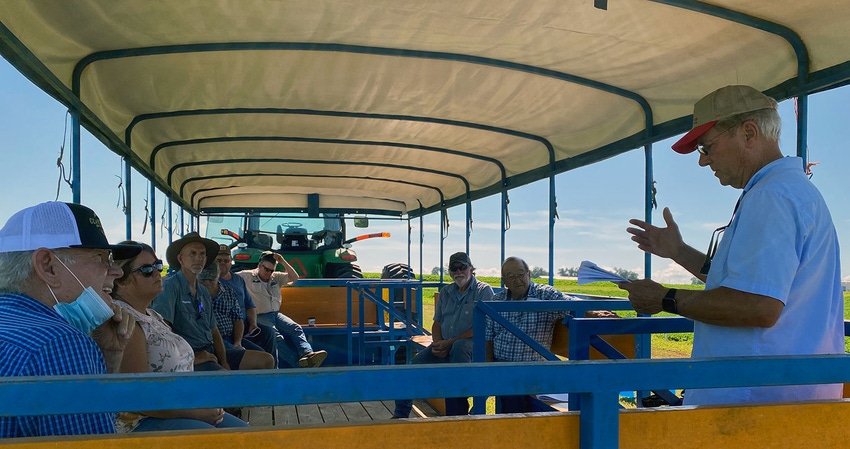
As mid-season turned into harvesttime, row crops along Florida's north-central panhandle looked OK. The fields had had plenty of water. Plenty.
"It has been a wet growing season in Jackson County. It really depends on the soil type as to how well crops faired this year. This is one of those years where the farms with sandier soils do better. It has rained often enough that even dryland peanuts look really good in the northeast corner of the county that struggles in drought years," said Doug Mayo, the University of Florida Extension coordinator in Jackson County, one of Florida's largest row crop counties.
Shortly after the annual Peanut Field Day at the North Florida Research and Education Center near Marianna in Jackson County Aug. 19, Farm Press got up with Mayo, and Ethan Carter, UF Extension agent for the north-central region, to get their take on a soggy season.
But first, let's set the stage with some numbers.
According to rainfall data presented by the North Carolina Institute for Climate Studies, between May 1 and mid-September, the Mariana location had received close to 30 inches of rain with a total of almost 50 inches for the year.

Between 1991 and 2020, the area's average total annual rainfall has been 51 inches. The record year for the region in the last two decades was 2002 with 67.5 inches of rain. The 2002 fall hurricane season was notably active starting in September when storms collectively dropped close to 30 inches of rain before the end of that year.
Corn
A few days before the peanut field day, Tropical Storm Fred moved directly across the region and dropped about 5 inches of rain.
"We had some pretty good corn yields in August, but there were a few fields that were not harvested until after Fred that had some issues. All in all, I think corn yields were hurt some by fungal diseases, but turned out pretty good, but not excellent," Mayo said.
"Scouting back in July, I saw rust in a number of fields. Most were at the dent stage or rapidly approaching it, and later fungicide applications were debated. Used by some growers, and not by others. Overall, the irrigated corn in (Jackson) did very well. Across eight yield checks that I performed the average was 252 bushel per acre," Carter said.
Cotton
"Cotton was doing pretty well but we did get several reports of wind damage and twisting from tropical storms. Particularly early planted cotton with heavy, green boll loads got twisted all around. Not sure what kind of total losses will come from this, but one farmer told me he had some fields he may only be able to spray from an airplane because of the wind twisting. I expect the combination of a wet year and wind damage to hurt final cotton yields," Mayo said.
"I think cotton has been 50-50 this year. Some growers managed to stay on top of their crop despite the wet weather, and others really struggled with pix applications. Some fields are waist high and level, others are shoulder high due to lack of pix applications in late June and July when it was hot, wet and rainy. I have seen some internode spacings up to eight fingers versus the preferred three or less," Carter said.
Peanut
The wet weather made it tough to stay on point with timely fungicide sprays on peanuts.
"Some growers have stronger high-input programs and can have larger gaps within their programs due to the residual of those products. Other growers with lower-input programs only (like Bravo and tebuconazole) had more issues with trying to get out applications in a timely manner. Either it rained every day, or the fields were too saturated for the equipment to go through," Carter said.
The excessive field moisture in June and July challenged farmers with heavier clay soils in the northwest part of Jackson County. They struggled to make timely pesticide applications for several weeks when flowering was in full force, Mayo said.
"The crops look pretty good, but the wet year will take its toll on crop yields of all types. Irrigated fields had only a limited advantage this year. We had a few weeks with some level of crop stress, so I still expect higher yields from irrigated fields, but not as drastic as in other years," Mayo said.
About the Author(s)
You May Also Like






